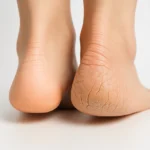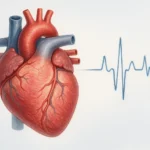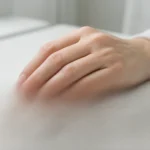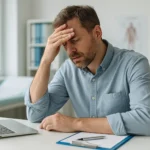
How to Reduce Anxiety Without Medication: A Complete Natural Guide
- Understanding Anxiety: What It Really Is and Why It Happens
- Common Symptoms of Anxiety That People Often Overlook
- The Stages of Anxiety: From Mild to Disruptive
- The Physiology of Anxiety: What’s Going on in Your Brain and Body
- Breathing and Grounding Techniques That Calm the Nervous System
- The Role of Nutrition in Anxiety: Food for a Calm Mind
- Movement and Exercise: Why Physical Activity Reduces Anxiety
- Creating a Calming Environment: Your Space Matters More Than You Think
- How to Sleep Better with Anxiety: Natural Restorative Strategies
- The Power of Routine and Predictability in Reducing Anxiety
- Journaling and Cognitive Reflection: Rewiring Thought Patterns Naturally
- Building Emotional Resilience Through Body-Mind Practices
- The Role of Social Connection in Easing Anxiety
- Managing Digital Overload: How Screens and News Fuel Anxiety
- When to Seek Professional Support Alongside Natural Strategies
- Your Personal Anti-Anxiety Toolkit: Build It, Use It, Trust It
- Can anxiety really be managed without medication?
- What is the best natural method to stop a panic attack?
- How long does it take for natural anxiety methods to work?
- Can certain foods make anxiety worse?
- Is magnesium really effective for anxiety?
- FAQ
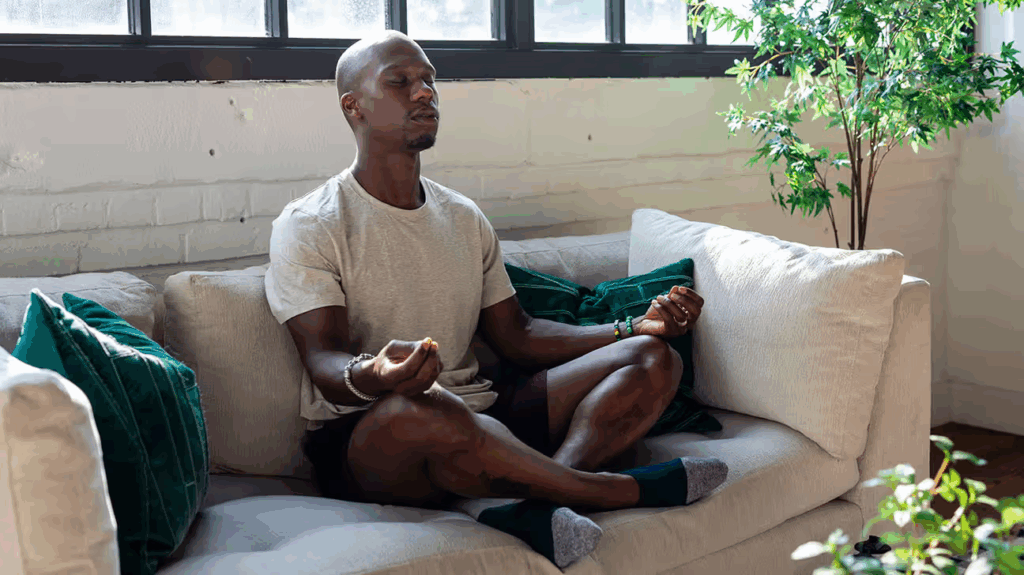
Understanding Anxiety: What It Really Is and Why It Happens
Anxiety isn’t just about feeling nervous—it’s a complex physical and mental response to perceived stress or danger. Your body releases adrenaline, your heart races, muscles tense up, and thoughts become overwhelmed by “what ifs.” While this system evolved to protect us in moments of real threat, modern life keeps many people stuck in chronic low-level anxiety, where the body stays in a heightened state long after the “danger” is gone.
There are many causes behind this response: past trauma, chronic stress, hormonal shifts, nutritional imbalances, and even societal pressure. Anxiety can be situational (like public speaking), generalized (persistent worry), or panic-related (sudden intense fear with physical symptoms). The key is that anxiety becomes a problem when it’s frequent, disruptive, or persistent—interfering with sleep, digestion, focus, or relationships.
Medication can be helpful in some cases, but it’s not the only way forward. Many people are turning to natural methods to address anxiety at its root rather than masking the symptoms.
Common Symptoms of Anxiety That People Often Overlook
While racing thoughts and a pounding heart are well-known symptoms, anxiety has a broad range of effects that often go unnoticed or misattributed. For example, digestive issues like nausea, IBS, or loss of appetite may be tied to anxiety’s effect on the gut-brain axis. Tight shoulders, tension headaches, and jaw clenching are also common, as your muscles stay “on alert.”
Less obvious symptoms include difficulty concentrating, feeling disconnected, sensitivity to sound or light, or even frequent urination. Emotionally, anxiety can manifest as irritability, impatience, or a sense of “doom” without knowing why. People may also isolate themselves socially, not realizing it’s anxiety driving the behavior.
Interestingly, anxiety sometimes mimics other conditions. For example, tingling in the hands or sudden numbness in fingers at night can be caused by hyperventilation, not just nerve issues—though it’s important to rule out other causes like magnesium deficiency.
The Stages of Anxiety: From Mild to Disruptive
Anxiety doesn’t always come on full force—it often develops in stages. In the mild stage, you might feel slightly on edge, restless, or have occasional trouble sleeping. At this point, you may not even identify it as anxiety.
As it progresses into a moderate stage, symptoms become more persistent. You might find it hard to focus, feel physical tension throughout the day, and start avoiding activities you once enjoyed. Panic-like episodes may emerge, though not full panic attacks.
In the chronic or severe stage, anxiety becomes deeply embedded in daily life. It affects work, relationships, health habits, and overall mood. People in this stage often experience racing thoughts, frequent physical symptoms, emotional exhaustion, and sometimes depression alongside anxiety. Understanding your stage helps you choose the right approach and avoid pushing yourself too far too fast.

The Physiology of Anxiety: What’s Going on in Your Brain and Body
When you feel anxious, your body activates the sympathetic nervous system, releasing stress hormones like adrenaline and cortisol. These chemicals sharpen focus and prepare your muscles to act—but they also elevate heart rate, restrict digestion, and tense your muscles.
In the brain, areas like the amygdala (fear center) and prefrontal cortex (decision-making) go into overdrive. You become hyper-vigilant, and your ability to think logically or stay calm is compromised. Over time, chronic activation of this system creates wear and tear on the nervous system, leading to burnout, sleep disturbances, and heightened sensitivity.
This response can become habitual, even when there’s no real threat. That’s why lifestyle-based, body-informed methods are so effective—they help retrain your nervous system to shift from survival mode into a calm, regulated state.
Breathing and Grounding Techniques That Calm the Nervous System
One of the fastest ways to dial down anxiety is by using your breath. Controlled breathing signals the brain that you’re safe, activating the parasympathetic nervous system (the “rest and digest” state). It only takes a few minutes to interrupt the cycle of fear and bring the body back to baseline.
A simple practice is 4-7-8 breathing: inhale for 4 seconds, hold for 7, and exhale slowly for 8. The extended exhale slows the heart rate and relaxes the diaphragm. Another is box breathing—equal inhale, hold, exhale, hold (like tracing a square)—used even by military personnel to stay calm under stress.
Grounding techniques also help bring awareness back to the body and away from anxious thoughts. These include focusing on physical sensations (like feeling your feet on the floor or your hands in warm water), or using the 5-4-3-2-1 technique (naming 5 things you see, 4 you can touch, etc.). With practice, these methods become powerful tools you can use anywhere—no equipment or medication needed.
The Role of Nutrition in Anxiety: Food for a Calm Mind
What you eat directly affects your mood and nervous system. Highly processed foods, sugar, caffeine, and alcohol can disrupt blood sugar, overstimulate the brain, and increase inflammation—all of which amplify anxiety. In contrast, a steady diet of whole foods rich in minerals, healthy fats, and antioxidants helps stabilize mood and regulate the brain’s stress response.
Magnesium, zinc, and B vitamins are especially important. Low magnesium, for instance, is closely tied to nervous system hyperactivity. Many people with anxiety unknowingly suffer from magnesium deficiency, which can lead to muscle tension, racing thoughts, and sleep issues.
Balancing blood sugar is also key. Eating protein and fiber with meals, avoiding long gaps between eating, and limiting caffeine all help reduce anxious episodes. Over time, nutrition becomes a foundational way to support emotional regulation from the inside out.

Movement and Exercise: Why Physical Activity Reduces Anxiety
Exercise is often called “natural Xanax” for good reason. Physical movement burns off excess stress hormones, boosts endorphins, and improves circulation—helping both the body and mind relax. Even low-intensity movement like walking or stretching increases oxygen to the brain and releases GABA, a neurotransmitter that calms brain activity.
You don’t need to run marathons or join a gym to feel better. Gentle practices like yoga, tai chi, or dance can be equally powerful, especially for those with chronic anxiety or trauma. What matters most is consistency. Just 20–30 minutes of daily movement—even walking outdoors—can create lasting changes in how your body processes stress.
If you experience joint pain or hand stiffness from co-existing conditions like arthritis in the hands, choose gentle, low-impact activities that don’t cause discomfort. The key is to move mindfully, not aggressively.
Creating a Calming Environment: Your Space Matters More Than You Think
Your physical space can either increase anxiety—or help reduce it. Bright lights, clutter, noise, and digital overload all stimulate the senses, making it harder for your brain to relax. A calming environment, on the other hand, cues your nervous system to slow down.
Start by decluttering visible surfaces, adding soft lighting (warm tones, not blue), and using natural elements like plants, wood, or stone. Scents like lavender, bergamot, or cedarwood can help through aromatherapy, sending safety signals to the brain’s limbic system.
Even adjusting temperature can help—cooler rooms often improve sleep, while soft textures (blankets, cushions) offer physical grounding. If anxiety tends to spike at night, especially with physical symptoms like finger tingling or restlessness, it may help to create a nighttime wind-down ritual in this calm space. This is also relevant for people managing numbness in fingers at night—many techniques overlap.

How to Sleep Better with Anxiety: Natural Restorative Strategies
Sleep and anxiety are deeply intertwined. Poor sleep increases anxiety sensitivity, and chronic anxiety makes it harder to fall—and stay—asleep. This creates a vicious cycle where your nervous system never gets a break. Breaking this cycle naturally starts with supporting the body’s sleep rhythms.
Establishing a consistent bedtime routine trains your brain to expect rest. Begin winding down 60–90 minutes before bed by dimming lights, turning off devices, and engaging in relaxing activities like light reading, breathwork, or a warm bath. Avoid stimulants like caffeine and screens in the evening, as they delay melatonin release.
Natural sleep aids like magnesium glycinate, valerian root, or chamomile tea may support relaxation without dependency. Cooling the room, using a weighted blanket, or playing soft white noise can help your body feel safe enough to fully rest.
For those with nighttime symptoms such as tension, jaw clenching, or finger numbness, optimizing your sleep position, using wrist splints, or managing mineral imbalances may also improve sleep quality and reduce nighttime stress.
The Power of Routine and Predictability in Reducing Anxiety
Anxiety thrives in chaos and unpredictability. When your schedule is erratic or your environment feels out of control, your brain works harder to anticipate what’s next. Over time, this constant mental scanning becomes exhausting. Creating structure is one of the most underrated anxiety tools.
A routine doesn’t have to be rigid—it just needs to include predictable rhythms that anchor your day. Morning rituals (like breathwork, journaling, or movement), regular meal times, and evening wind-down practices all signal safety to your nervous system.
Having designated “buffer zones” during transitions (e.g., five quiet minutes between tasks) prevents overload. You can also reduce decision fatigue by simplifying clothing, meals, or task planning. This frees up cognitive energy and builds trust in your ability to manage life calmly, even when unexpected stress arises.
Journaling and Cognitive Reflection: Rewiring Thought Patterns Naturally
Anxiety often begins with thoughts—but those thoughts are rarely questioned. Writing them down helps you slow down, see your patterns clearly, and build awareness of how you’re interpreting life. Journaling turns your inner chaos into something visible—and manageable.
Start with a basic “brain dump”: write everything you’re feeling, no filter. Then ask questions like: Is this true? Am I assuming the worst? What’s another possible outcome? This technique is rooted in cognitive behavioral therapy (CBT), and it helps untangle anxious spirals before they take over.
You can also keep a daily mood and trigger log to track what increases or reduces your anxiety over time. This gives you insights into food, sleep, stress, or environment connections. Over time, journaling creates a safe space in your mind—one where you’re not just reacting, but reflecting.
Building Emotional Resilience Through Body-Mind Practices
Reducing anxiety naturally isn’t just about calming down—it’s about retraining your body and brain to handle stress differently. This is what resilience is: the ability to return to balance more quickly after a challenge. You build it like a muscle, through repeated, supportive practices.
Yoga, tai chi, and qigong combine gentle movement, breath, and focus, making them ideal for nervous system regulation. Cold exposure (like a splash of cold water on the face or a cool shower) activates the vagus nerve and can help shift from panic to calm. Even singing or humming stimulates relaxation through vibration.
These body-based strategies work at the level of the autonomic nervous system, where much of anxiety lives—beyond logic or willpower. As you practice regularly, your system begins to recognize calm as your baseline, not danger.
The Role of Social Connection in Easing Anxiety
Isolation often feeds anxiety. When you’re disconnected from others, your brain has fewer external signals of safety and support. Social bonding, even in small doses, activates oxytocin, a hormone that naturally lowers stress levels and enhances trust.
You don’t need a large circle—what matters is quality of connection. A phone call with a trusted friend, sitting with someone over tea, or even joining an online support group can make a difference. Sharing your feelings out loud often reduces their intensity and reminds you that you’re not alone.
For some, anxiety can make socializing feel overwhelming. In those cases, starting small—like visiting a familiar place or exchanging brief texts—can be enough to gradually rebuild connection. Social contact helps recalibrate your nervous system and balance out internal tension with external safety.
Managing Digital Overload: How Screens and News Fuel Anxiety
Constant exposure to digital content—especially alarming news, social media, or multitasking apps—keeps your brain in a reactive, overstimulated state. Notifications, rapid scrolling, and emotional headlines activate the same alert system involved in anxiety, often without you realizing it.
Reducing screen time, especially before bed, is one of the simplest ways to calm your nervous system. Set intentional boundaries: no screens 60 minutes before sleep, limit doom-scrolling, and consider digital detox blocks during the week. Use apps like grayscale filters or focus timers to minimize overstimulation.
Even curating your feed matters. Unfollow content that spikes anxiety and seek out accounts focused on mindfulness, nature, or humor. A calmer screen leads to a calmer mind—and a better chance of restoring your baseline.
When to Seek Professional Support Alongside Natural Strategies
Natural methods are powerful, but they don’t mean going it alone. If your anxiety feels constant, causes panic attacks, disrupts daily function, or leads to depression, professional help is essential. Therapists, especially those trained in CBT or somatic approaches, can provide tools that complement natural work.
Some people benefit from short-term medication while using natural strategies to build resilience. Others explore EMDR, IFS, or biofeedback, all of which can deeply rewire the brain’s fear response.
Seeking help is not a failure—it’s an act of commitment to healing. The best plan is often integrative: blending professional care with daily practices that empower you from within.
Your Personal Anti-Anxiety Toolkit: Build It, Use It, Trust It
There’s no one-size-fits-all formula to reduce anxiety without medication, but the most effective strategies are layered and personalized. What works for one person may not work for another, so it helps to build a flexible toolkit you can use based on what you need in the moment.
| Situation | Natural Response to Try |
| Racing thoughts at night | 4-7-8 breathing, warm magnesium drink |
| Muscle tension | Gentle yoga, Epsom salt bath |
| Fear about the future | Journaling, grounding touch (cold water, fabric) |
| Feeling overwhelmed by noise | Noise-canceling headphones, quiet walk outside |
| Physical fatigue with anxiety | Low-intensity movement, magnesium check |
| Isolation or dread | Quick connection: text, call, or voice note |
Your goal isn’t perfection—it’s regulation. Over time, the brain and body can learn to return to calm faster, with less effort. You don’t need to control every thought—you just need to give yourself consistent cues of safety.
Can anxiety really be managed without medication?
Yes, many people manage anxiety effectively without medication—especially when the condition is mild to moderate. Through consistent lifestyle practices like breathwork, movement, nutrition, and therapy, the nervous system can be retrained to stay regulated. While medication can be helpful or even necessary for some, natural strategies work on the root causes and can offer long-term tools for self-regulation and resilience.
What is the best natural method to stop a panic attack?
The most effective approach is to interrupt the physiological spiral. Techniques like 4-7-8 breathing, cold water splashing, or vocal humming stimulate the vagus nerve and can quickly bring the body out of fight-or-flight. Grounding with physical sensation (pressing feet into the floor or holding a textured object) also helps shift focus away from anxious thoughts and back into the body.
How long does it take for natural anxiety methods to work?
Some methods, like deep breathing or cold exposure, provide immediate relief in a moment of anxiety. Others—like journaling, nutrition changes, or nervous system training—take longer to show results, often a few weeks to months. The key is consistency. Over time, your baseline level of calm improves, and your system becomes more resilient.
Can certain foods make anxiety worse?
Yes, highly processed foods, refined sugars, excessive caffeine, and alcohol can all contribute to anxiety symptoms by destabilizing blood sugar, stimulating the nervous system, or disrupting sleep. Caffeine, in particular, can mimic the sensation of panic in sensitive individuals. On the other hand, foods rich in magnesium, healthy fats, and antioxidants help regulate brain chemistry and stabilize mood.
Is magnesium really effective for anxiety?
Magnesium is one of the most studied minerals for its calming effect on the nervous system. It helps regulate neurotransmitters like GABA and supports muscle relaxation, sleep quality, and cortisol balance. Many people with anxiety unknowingly have magnesium deficiency, and correcting this can noticeably reduce symptoms like irritability, restlessness, and panic.
FAQ
How do I stop anxious thoughts from spiraling?
One proven technique is cognitive distancing—naming the thought, writing it down, and asking: Is this helpful? Is it true? What’s the evidence? This brings your logical brain back online. Pairing this with breathwork or grounding practices can stop the emotional spiral and shift focus to the present moment. Journaling daily helps weaken repetitive thought loops over time.
Can exercise make anxiety worse?
In most cases, exercise reduces anxiety by metabolizing stress hormones and increasing mood-boosting neurotransmitters. However, high-intensity workouts may feel overstimulating to someone already in a heightened state. In that case, gentle movement—like walking, stretching, or tai chi—is a better option until the nervous system is more stable.
What if anxiety hits at night?
Nighttime anxiety often appears as racing thoughts, body tension, or a sense of dread. A wind-down routine is key—dim lights, avoid screens, and use techniques like 4-7-8 breathing or gentle journaling. Magnesium-rich drinks and consistent sleep cues help the body feel safe. If symptoms include physical signs like numbness in fingers at night, adjusting sleep position or mineral balance may also help.
Does screen time increase anxiety?
Yes, excessive screen time—especially late at night or involving emotionally charged content—can overstimulate the brain, disrupt sleep, and raise cortisol levels. Blue light suppresses melatonin production, while social media or news scrolling can trigger comparison or fear. Creating screen-free zones in your day supports mental clarity and emotional stability.
Are there herbs or supplements that help with anxiety?
Yes, several natural options support anxiety relief. Ashwagandha, L-theanine, Rhodiola, valerian root, and magnesium glycinate are among the most popular. These work by calming the nervous system, balancing stress hormones, or improving sleep. However, not all supplements work for everyone, and it’s best to consult a provider before starting a new regimen—especially if you take medication.
Can hand pain or stiffness be related to anxiety?
Indirectly, yes. Anxiety often causes people to tense their muscles unconsciously—especially in the shoulders, jaw, and hands. Over time, this can lead to pain or limited mobility. For people managing both anxiety and conditions like arthritis in the hands, chronic tension may worsen symptoms. Combining calming practices with gentle hand stretches helps relieve both.
How can I use breath to calm anxiety instantly?
Try longer exhales than inhales—this activates the parasympathetic system. For example, breathe in for 4 seconds and exhale for 6–8 seconds. Do this for 1–2 minutes and notice your heart rate slow and muscles relax. You can also try breathing through the nose only, or using “box breathing” to create rhythm and structure for your mind.
Is anxiety linked to hormone imbalances?
Yes, hormonal shifts—especially around menstruation, thyroid dysfunction, perimenopause, or postpartum—can intensify anxiety. Estrogen, progesterone, and cortisol all influence how your body processes stress. In these cases, natural support may include dietary adjustments, nervous system work, and possibly hormone testing with a functional provider.
Can I reduce anxiety without giving up everything I enjoy?
Absolutely. Managing anxiety doesn’t require a life of restriction—it’s about creating more balance. You might still enjoy coffee or social media, but with better boundaries. You’ll learn how to recover from stress faster, recognize triggers earlier, and develop tools that support your unique life—not limit it.
What’s the first step I should take today?
Start with awareness. Track your symptoms, triggers, and patterns for a few days—then choose one simple practice to try daily. That might be a 3-minute breathing exercise, a screen-free hour, or adding a magnesium-rich snack. Don’t aim for perfection. Small, consistent changes make the biggest long-term impact on anxiety.
